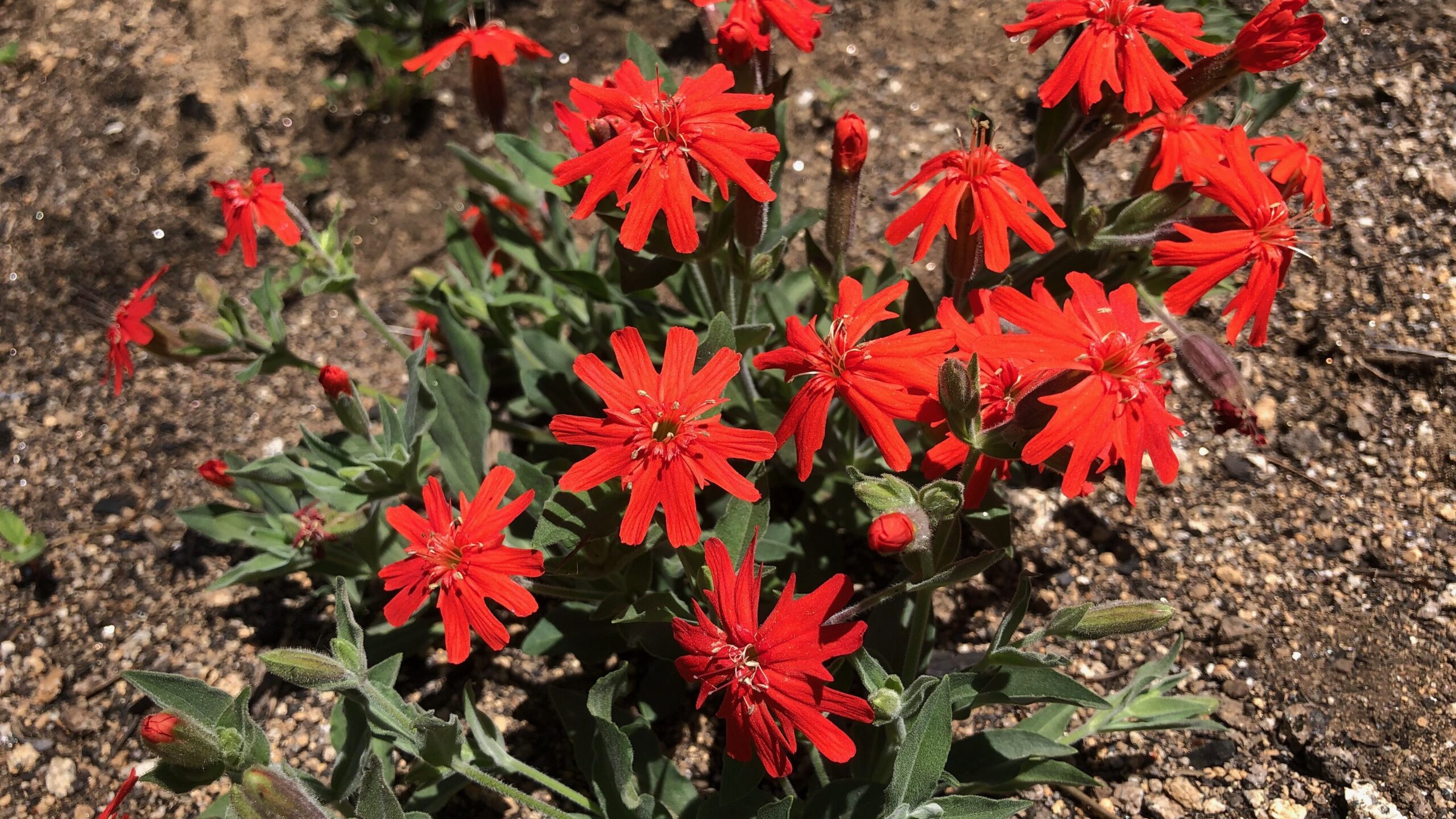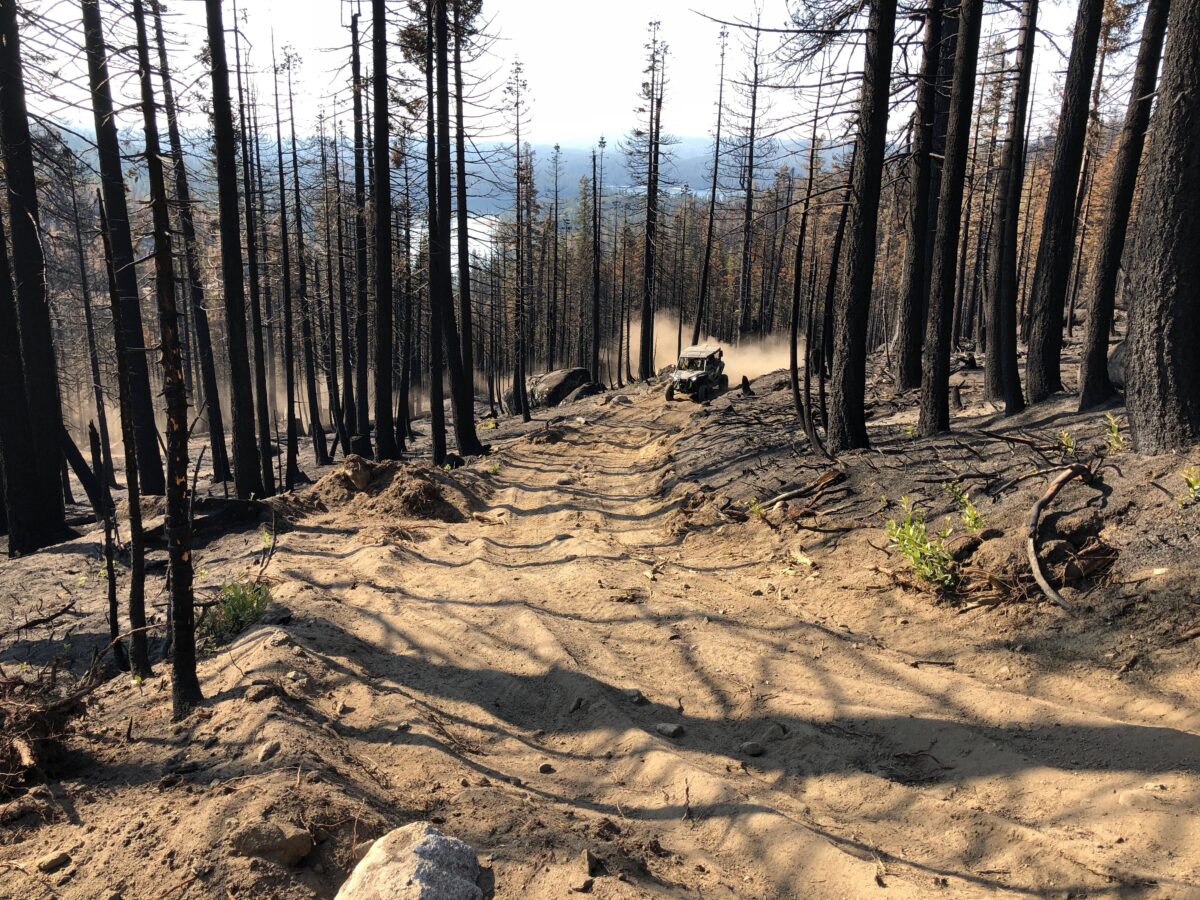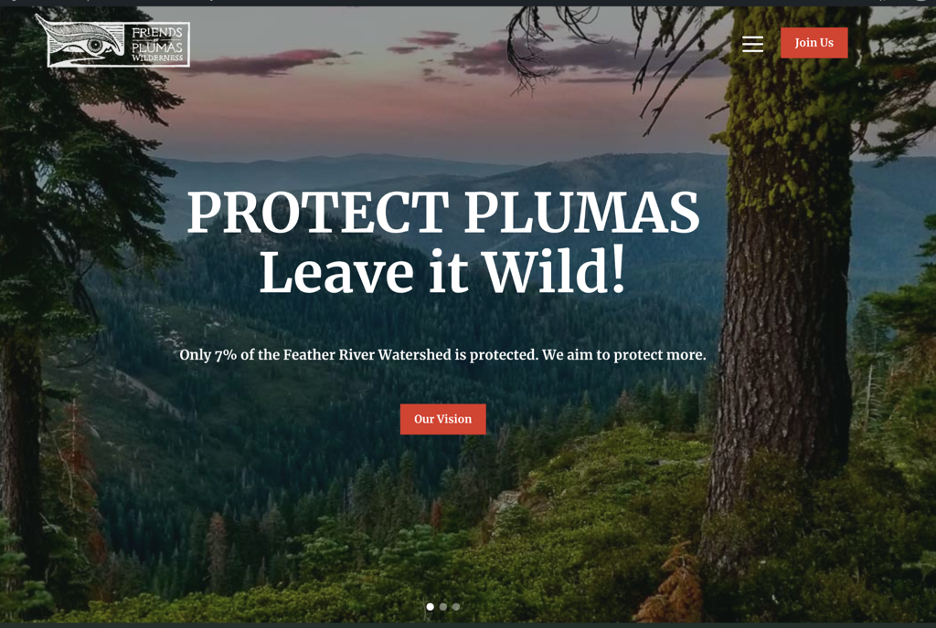


CONNECT WITH US


Darla recently made a social media post with a picture from our first backpacking trip together in the Eagles Nest Wilderness. She did not mention that it was my first backpacking trip, the next year I worked as a Wilderness Ranger there, or that we were soon after married on the shore of a lake at the edge of the Wilderness. Our initial wilderness outing inspired a life-long journey focused on the wildest remnants of the West. I would go on to earn a Master’s degree in Wildland Management and work on behalf of wilderness for three federal land management agencies and as many non-profit organizations. Wilderness is fundamental to who I am.

In over thirty years of studying, exploring, and working in Wilderness Areas across the West I have never seen such blatant disregard for the Wilderness Act as I have witnessed in the Bucks Lake Wilderness in the last two years. During the North Complex, the Plumas National Forest Supervisor gained authorization for the use of chainsaws to fell over 250 trees, some up to six feet in diameter, and clear two helipads within the Wilderness, although the fire did not get within seven miles of the “Mill Creek Massacre.” Last year, the Forest Supervisor gained authorization for the construction of 11 miles of dozer line within the Wilderness although Plumas National Forest fire and fuels experts recommended dozers not be used in the Wilderness, arguing hand-line would be far more effective.

As soon as smoke from the Dixie Fire cleared and fire restrictions were lifted, we at FoPW were out in the Bucks Lake Wilderness to assess fire effects and fire suppression impacts. We found only 14% of dozerline was effective while hand-line worked 71% of the time. We took to the air as well, and brought along Senator Padilla’s Field Representative, journalists, and local forest and fire experts. We found mixed and favorable fire effects at higher elevations in the Bucks Lake Wilderness while fire suppression impacts and “repairs” permanently degraded the character of the Bucks Lake Wilderness.
More of our findings are summarized in the 2021 Region 5 Fire Report, written by Luke Ruediger, Conservation Director for Klamath Forest Alliance, with our support and encouragement. The report is a well-researched indictment of Forest Service leaders in the Pacific Southwest Region entrusted to oversee our public lands. Our analysis of fire suppression impacts finds the use of dozers in Wilderness has dramatically increased across Region 5 in the last six years despite being ineffective and undermining the intent of Congress to permanently protect “the benefits of an enduring resource of wilderness” for present and future generations.
Recent wildfires have made it clear that we cannot trust Forest Service leaders to protect our wildlands or expect a handful of citizens to defend them. We must create a stronger and more diverse local conservation community who will stand up for wildlife, wildlands, and wild rivers if we want them to inspire future generations, like the Eagles Nest Wilderness did for me.
If wild things inspire you, we need your help now. I ask that you become a member of Friends of Plumas Wilderness and encourage your friends and family to do the same. Help us reach our goal of 200 members by July and 400 members by the new year.
Leave it wild!
Darrel

FoPW realizes the importance of collaborating with local stakeholders, especially those from regional indigenous communities. Protection and management of our watershed must include Traditional Ecological Knowledge and insight into the needs, goals, and traditions of the Maidu people. To that end, FoPW has contracted with Lethi Watson to act as Tribal Liaison. Board member Will Lombardi recently interviewed Lethi via email about her personal history, educational and professional background, and her vision for cooperative Tribal guidance. Here is some of what Lethi had to say:
I grew up on the border of Plumas and Yuba County lines with my parents and six brothers. I am Estom Yumeka Maidu from Enterprise Rancheria. My tribal background and the roots running within me are what bring me so much pleasure to act as Tribal Liaison. I was raised by my family to take care of this land, so that all of us can return time and time again, sharing memories, enjoying the great outdoors while hunting, fishing, and gathering in this area, our indigenous territory. Taking care of the land is what has been instilled in me ever since I can remember.
Our family tends areas for gathering, and over the years we have lost some of those areas to logging, fires, and other environmental impacts. My dad would educate us about those places. I remember we went up to go gooseberry picking one day and where our most abundant spot was, we arrived to nothing but clear-cut forest. Experiences like this have led me to where I am today.They feed my determination to educate people and protect these lands through my work so I can share these same gathering areas for generations to come!
I have had multiple jobs where I have done just that. The first time I fell in love with work outdoors was when I joined the Sierra Buttes Trail Stewardship’s Student Storrie Trail Crew in 2013, where I gained lifelong friends and a fever for environmental work. After working with them over four seasons, I eventually moved on to work alongside my own tribe as they had opened up a position for an Environmental Intern. I eventually became a Technician. At the same time I obtained my Associates Degree in Anthropology in 2020. Now I am back at it with my feet on the ground to protect my history, our land, and our waters.
The Tribal Liaison position is giving me the chance to reconnect not only with tribal organizations, but with environmental organizations as well. I am honored to be in a position that brings people together to work towards the same goals, the protection of our lands. I have so many ideas and so much enthusiasm for what lies ahead of me!
I have already begun outreach and presentations and have nothing but good comments about the work that Friends of Plumas Wilderness is trying to get support for. My goal is to let tribal people know that we all have the same fire in us to protect these areas and that we can accomplish these goals faster if we work together by helping each other!

After a winter that felt like it included all four seasons, spring is here! As an avid weather data-keeper, I’ve been fascinated by the precipitation fluctuations since last October. I keep a daily high-low temperature and precipitation journal. Our yard in Meadow Valley received just over 36” of precipitation this water year. Like the rest of the watershed, we’re at roughly 60% of normal.
October was all rain, while December brought feet of snow. Lots of shoveling, skiing, and candlelight during extended power outages! I’m so grateful for places like Bucks Lake Wilderness to experience the incredible beauty of winter. My mantra is, “If there’s snow, we better ski!”

Drought is the hot word now, though; the snow is melting fast and January and February are the driest on record state-wide.
Conversation was anything but dry, however, as Friends of Plumas Wilderness filmed most of our board members plus several community leaders in March, sharing testimony about what they love about the Feather River region and why they are involved with FoPW. We’re working with filmmaker Alex Rubenstein to make a series of video shorts to share through our website and social media channels. Keep an eye out, share, and like – coming soon!
To Spring!
Darla

| Now is an opportune time to protect our public lands given landscape-scale changes from wildfires, proposed regional projects, and a political window of opportunity. We live in an amazing place that deserves protection. Here are some numbers to remember: 400,000 and 100. Friends of Plumas Wilderness has identified an ambitious goal to protect 400,000 acres of land and 100 miles of rivers in the Upper Feather River Watershed, and we’re calling our initiative Protect Plumas – a locally-led, shared conservation vision to expand protection of public lands and waters in the Upper Feather River watershed. Our area lacks permanent protections – only 7% is protected, compared to 12% nation-wide and 24% of California. For FoPW, greater protection means maintaining flexible management practices while preserving sensitive areas for the long term. Recent wildfires have impacted all of us, and make it obvious that our health is dependent on land health. We’re working with tribal and private land partners to accomplish our goal – and we want your input and support! |

Since 2017, 60% of the Upper Feather River Watershed has burned, dramatically impacting communities, working lands, and wildlands. As the headwaters of the State Water Project, these impacts extend far beyond our region, affecting most Californians.
Our watershed is experiencing rapid, landscape-level changes due to wildfire. Additionally, new large-scale projects are proposed, including the US Forest Service’s “Confronting the Wildfire Crisis” and Sierra Buttes Trail Stewardship’s “Connected Communities”.
While we support these projects, it is critical they do not adversely impact important natural resources and cultural values such as wildlife habitat, water quality, and opportunities for current and future generations to enjoy wildlands and free-flowing rivers. We need to recognize that communities and forests are equally vulnerable and deserve equal care. Likewise, we must balance promotion with protection.
Given these rapid, large-scale changes to our public lands, now is the time to have a conversation about the future of these places we all care about. Friends of Plumas Wilderness aims to facilitate that conversation through the Protect Plumas initiative.

Protect Plumas seeks to facilitate a conversation to develop a locally-led, shared conservation vision. FoPW’s hope is to create a network of public lands that complements private and tribal land protection efforts to provide wildlife habitat and a spectrum of inclusive recreation opportunities.
Protect Plumas focuses on US Forest Service public lands within the Upper Feather River Watershed managed by the Plumas, Lassen, and Tahoe National Forests. These lands are primarily within Plumas County and portions of Butte and Sierra Counties.
The ultimate goal of FoPW is to permanently protect 400,000 acres of public land and 100 miles of rivers and streams through special designations. Specific locations and types of land designations will be determined through an inclusive, collaborative public process.
Representatives from FoPW are presenting information about Protect Plumas to various community groups – a total of eight to date, including reps from two tribal groups (Enterprise and Mooretown Rancherias). There are plenty more presentations scheduled – watch our social media for more information!
First, become a member of Friends of Plumas Wilderness! Never, since our founding in 1974, has FoPW been a membership organization, but it’s an essential time to show your support for wild places. Plus, we’ve thoughtfully chosen the perks of membership: stickers and shirts (short-sleeve, long-sleeve, and sun hoodies) produced by local businesses (thank you Jamie at Wild Hare Sign Company and Brittany at The Lost Sierra Company!) and featuring FoPW Board President Darrel Jury’s eye-catching logo! The shirts are made from 100% recycled material and come in a variety of beautiful colors.

Second, take our Protect Plumas public outreach survey. Spend FIVE MINUTES right now to five your input on what matters most to you about the Feather River Watershed!
We worked with Brad Bodenham at Hambell Graphic Design to launch a beautiful new website at the beginning of March!
It’s loaded with information, stunning imagery from our beautiful region, and two ArcGIS StoryMaps that walk you through Our Vision to protect more lands and waters through the Protect Plumas initiative, and Our Home, the story of the Upper Feather River Watershed.
See how many familiar places – and faces – you can find on the site!

Be a part of FoPW in a whole new way – by joining us as a charter member! Our goal is 200 new members by July and 400 by the end of the year. Be one of the first Friends!
Tell your family and friends!


To educate Plumas National Forest leaders about the many values local wild places possess we have initiated Friday Field Trips with Forest Service staff and representatives from allied conservation and recreation organizations. Friday Field Trip goals are to meet with Forest Service staff regularly, expand our circle of participants to include a diverse array of public land stakeholder organizations, and share our knowledge and ideas on how to improve local public land management.
Our initial Friday Field Trip was to the Little Volcano proposed Special Interest Area above the Wild & Scenic Middle Fork Feather River on December 10, 2021. Darla DeRuiter and Darrel Jury were joined by Emily Moghaddas, Public Services Staff Officer and Joe Hoffman, Mt. Hough District Ranger. We hiked the Bachs Creek Trail and talked about a variety of public land issues including forests and fires, salvage logging, recreation, and increased visitation.

In January, Friends of Plumas Executive Director Darla DeRuiter, board members Darrel Jury, Ron Logan, Trinity Stirling, and GrizzlyCorps Fellow Conny Rios Escobar met with Plumas National Forest Supervisor Chris Carlton, Public Services Staff Officer Emily Moghaddas, Recreation & Land Program Manager Erika Brenzovich, and Mt. Hough District Ranger Joe Hoffman to discuss Winter Recreation Conflict Mitigation & Monitoring. During the meeting Chris Carlton said he hopes to sign the Final Record of Decision for the Plumas National Forest Over-snow Vehicle Use Designation before the 2022-23 winter season.

In mid-October, Friends of Plumas Wilderness partnered with EcoFlight and CalWild to get elected officials, journalists, and local forest experts in the air to look at effects of the Dixie Fire in and around the Bucks Lake Wilderness and share our findings that the use of dozers was unnecessary and ineffective.
A snowstorm caused us to bump our flights back a day and we were unable to get Plumas County Supervisors Greg Hagwood and Kevin Goss in the air with us. From the air we could see that fire effects in higher elevation portions of the Bucks Lake Wilderness were mixed and beneficial compared to high severity effects on steeper slopes at lower elevations.

Many of you have been part of Friends of Plumas Wilderness for years, and some are just discovering the organization. No matter how deep your ties or how long your connection is, we need you to join us as a member today. Show your passion for conserving the lands and waters of the Upper Feather River watershed – join now!